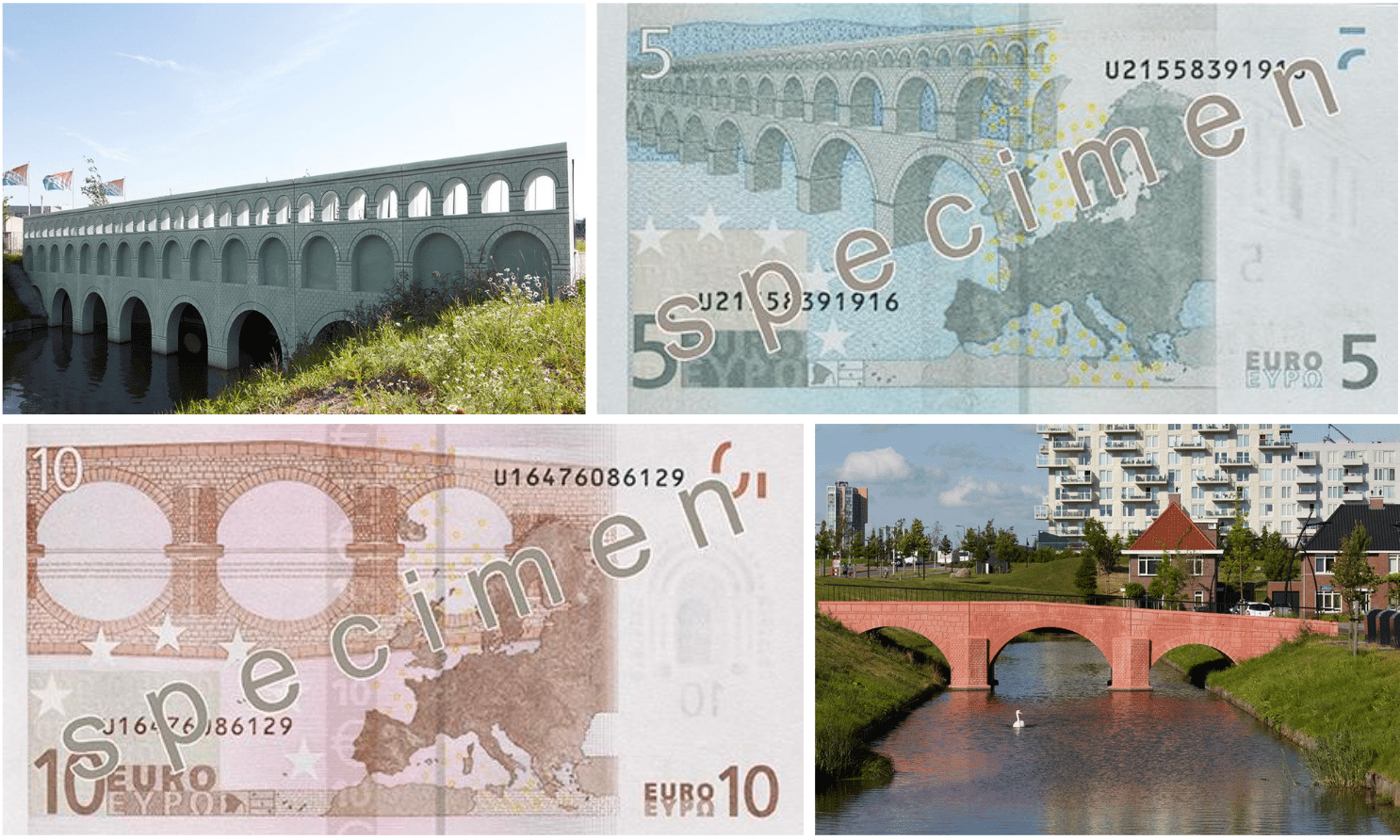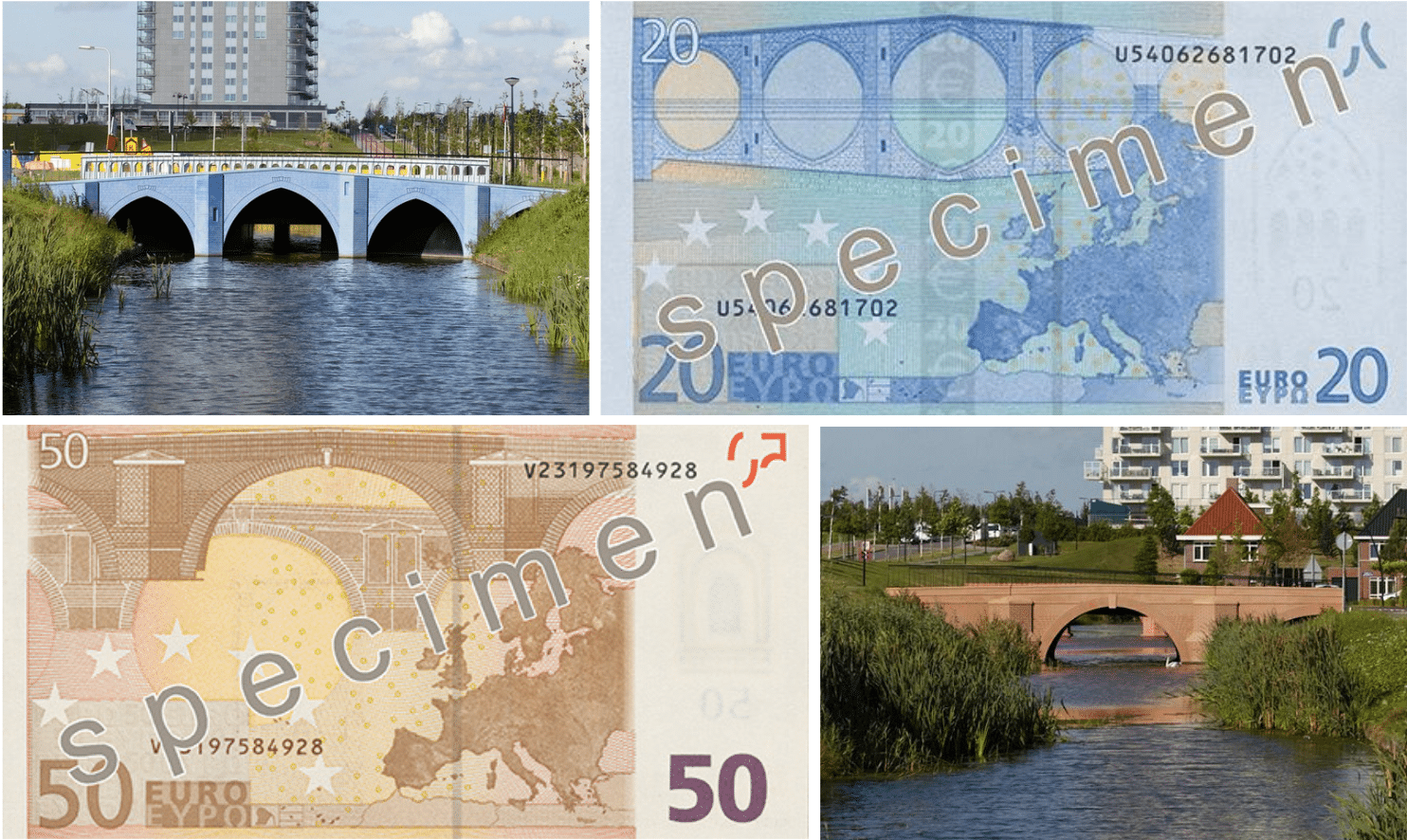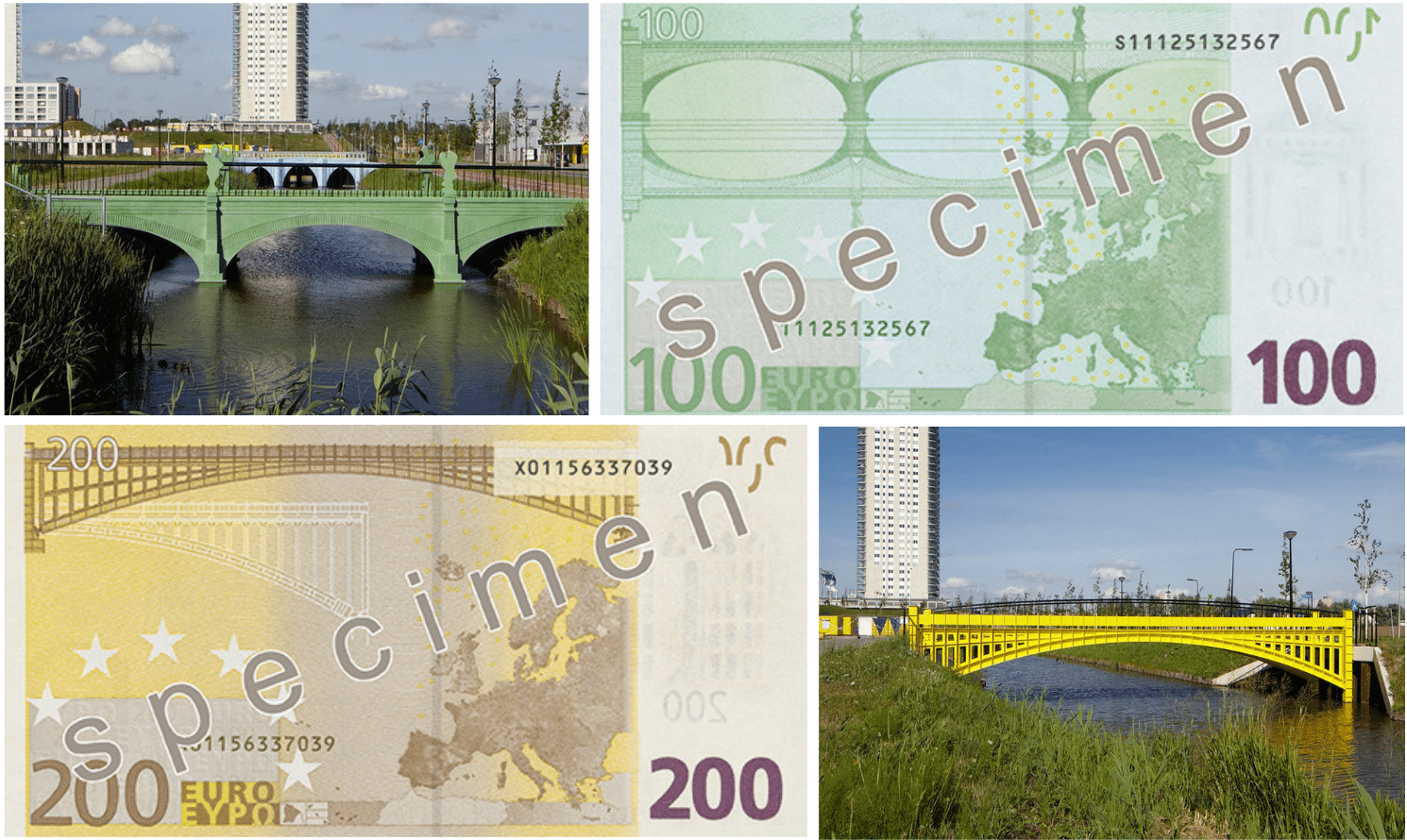The Dutch have a long history of building impressive bridges across the country’s network of rivers and canals. Some are design icons like the historic Magere Brug in Amsterdam and the sleek Erasmusbrug in Rotterdam. But the seven ‘euro bridges’ built in Spijkenisse, near Rotterdam, are possibly the most bizarre.
When the European Union launched the euro in 2002, the European Central Bank (ECB) had to decide on images to appear on its banknotes. Not wanting to offend any member state, it commissioned the Austrian designer Robert Kalina to design a rather bland series of banknotes featuring abstract European architectural styles – Classical Greek, Ancient Roman, Gothic, Renaissance, Baroque, Rococo, 19th-century industrial and 20th-century contemporary.
The ECB decided to put bridges on the back of the banknotes as they symbolised European ideas of communication and cooperation. But all seven bridges had to be imaginary, the bank insisted. No Rialto Bridge in Venice. No Pont Neuf in Paris.

In 2011, the Dutch graphic designer Robert Stam came up with an eccentric proposal to build seven full-scale replicas of the euro banknote bridges. The new bridges were constructed in a modern housing development in Stam’s home town of Spijkenisse. The local council saw it as an imaginative way to attract tourists.

The Spijkenisser Eurobruggen, as they are called, are exact copies of the bland originals, painted the same colours. They are even named after the banknotes they appear on, from the €5 Brug to the €500 Brug.

Some people find the euro bridges boring. Others think they are curious follies. But no one can deny that they are all Dutch bridges, which was never the plan.













